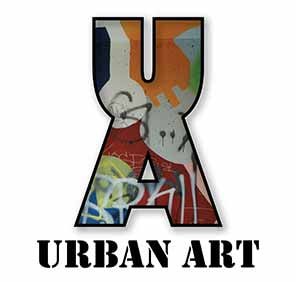A while back, I asked you your thoughts on NFTs. The consensus was not favorable for this new(ish) art form!
Erik stated, “I think it’s kind of lame. Can I hang it on a wall? Can it make it big or small? Can I take it on a plane? Can I display it in a hall? Does it even exist?” All good questions!
Ben quoted Salvador Dali “Art is anything you can get away with.” “Honestly,” Ben continues, “anything “Crypto” is something I steer away from. Used for money laundering, ransoming stuff, and so forth. You can’t buy a cup of coffee with crypto. It uses the “greater fool” theory to sell its worth.”
“There was a huge run-up in the price of crypto as Afghanistan was collapsing, possibly due to warlords buying it in Afghanistan, then cashing out in Dubai or wherever.” Ben concludes, “Digital isn’t regulated, so it’s prone to all kinds of fraud.” (I’m with you on crypto, Ben.)
David sent an interesting article that echo’s Ben’s comments. I have included a link to the article below.
My sister summed up her feelings by saying, “It’s a joke.” When pressed, she told me I was hurting her head and to go away! Love you, Debbie!!!

What are NFTs?
In this discussion, I am focusing on NFTs, which are digital art. There are other types of NFTs, including music, trading cards, virtual fashion, games, videos, and even Tweets!
NFT stands for non-fungible token. They are created using the same type of programming as cryptocurrency. NFTs have a distinct digital signature, meaning exchanging an NFT for another NFT (hence, non-fungible) is impossible.
“NFTs are one of a kind, or at least one of a very limited run, and have unique identifying codes. “Essentially, NFTs create digital scarcity,” says Arry Yu, chair of the Washington Technology Industry Association Cascadia Blockchain Council and managing director of Yellow Umbrella Ventures.”
In the Forbes article, What Is An NFT? Non-Fungible Tokens Explained, by Robyn Conti and John Schmidt, define an NFT as “An NFT is a digital asset that represents real-world objects like art, music, in-game items, and videos. They are bought and sold online, frequently with cryptocurrency…”
NFTs hit the scene in 2014, becoming a popular way to buy and sell digital artwork. Since 2017, $174 million has been spent on NFTs (as of 2-2022).
Are NFTs Environmentally Friendly?
In themselves, NFTs are not hazardous to the environment, but how they are made can be. Most NFTs are minted using the proof-of-work operating method. In plain English, NFTs are digitally created in a manner that establishes their individuality. A large amount of electricity is used to create a single NFT. They use the same amount of electricity as an average American household over almost nine days.
If you purchase an NFT using the proof-of-stake process, there is little environmental harm. The creation process for the proof-of-stake NFTs is the equivalent of running a T.V. for 20 minutes.
The Crypto Angle
David shared an interesting article; NFTs aren’t art — they’re just the Cult of Crypto’s latest scam, which I recommend you read in its entirety. The article is an interview with Dan Olson, the YouTuber of the channel Folding Ideas. Here are some highlights.
Olson states, “NFTs and cryptocurrency look like a scam because a scam is what they are.” He continues, “In traditional investing, you need certain licenses and whatnot in order to be a trader of regulated securities. With crypto, there isn’t a line between who is running a pump and dump, who is starting a legitimate well-intentioned project, who is just a buyer, who is a speculator, who’s an investor, who’s a collector. It gets very vague.” On NFTs, Olson says, “NFTs were basically these goods being wheeled into existence in order to provide something crypto can be spent on.”
Here are my thoughts!
When I first heard about NFTs, I was interested. Mainly (and I hate admitting it) because I thought it would be a quick way to make lots of money! I have created a lot of digital art, so it seems like an easy fit for me.
I also like the novelty of it. In the arts, it’s easy to think of oil paintings as an ancient technique. It is, but there was a time when it was novel. Dutch painter Jan van Eyck (1390-1441 A.D.) was one of the first to work with oil paints. He took a risk on a new medium, and it worked out for him (and us)! He had no guarantee that oil paints would be more than a flash in the pan, but he experimented with it.

In the end, I decided that NFTs were not for me. Once I started thinking past the “riches” I thought I would rake in, I concluded that I was happy with my brushes and canvas. I like to interact with the physical painting as I develop it, and I don’t need to worry about contributing to climate change due to my artwork. Lastly, the thought of being involved in crypto doesn’t appeal to me on any level!
Thanks to all of you for sharing your views on NFTs; I couldn’t do this without you!
Links
I used the following articles as references:
Forbes, What Is An NFT? Non-Fungible Tokens Explained
Investopedia, NFTs, and the Environment.
Salon, NFTs aren’t art — they’re just the Cult of Crypto’s latest scam

